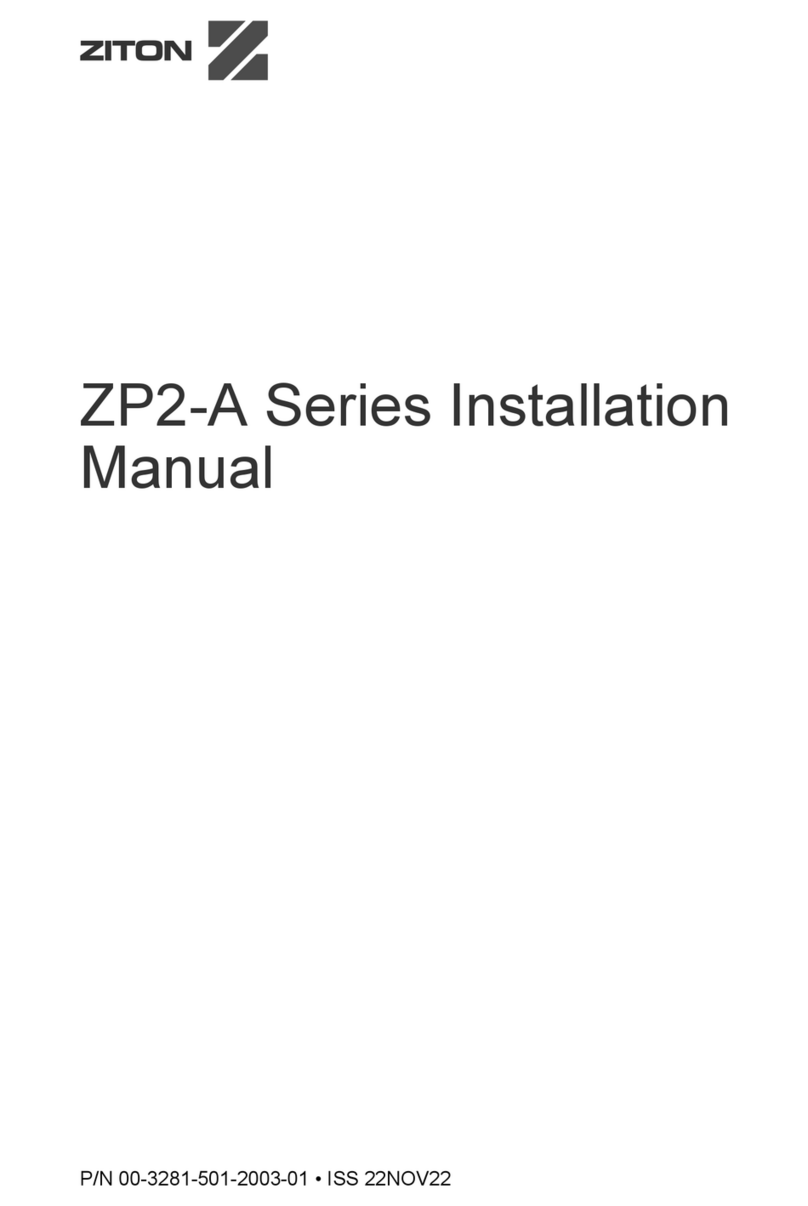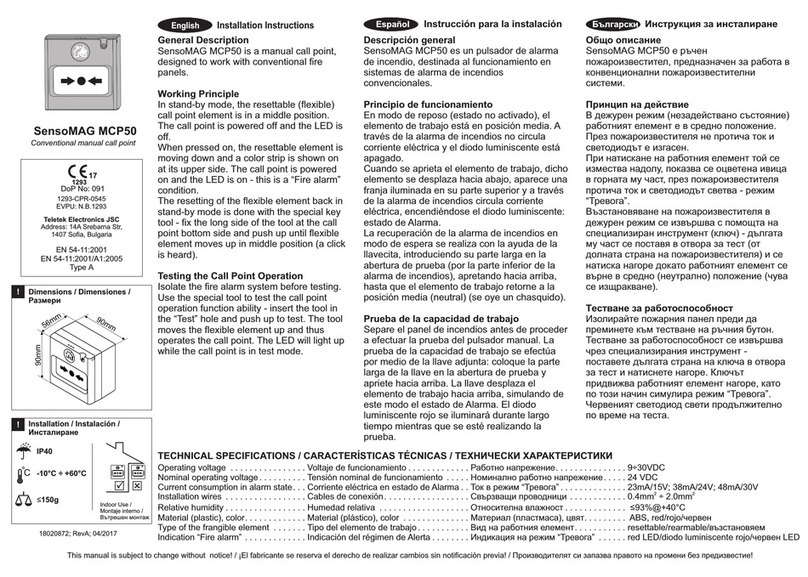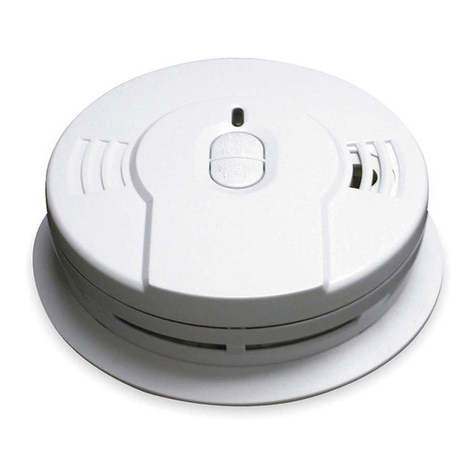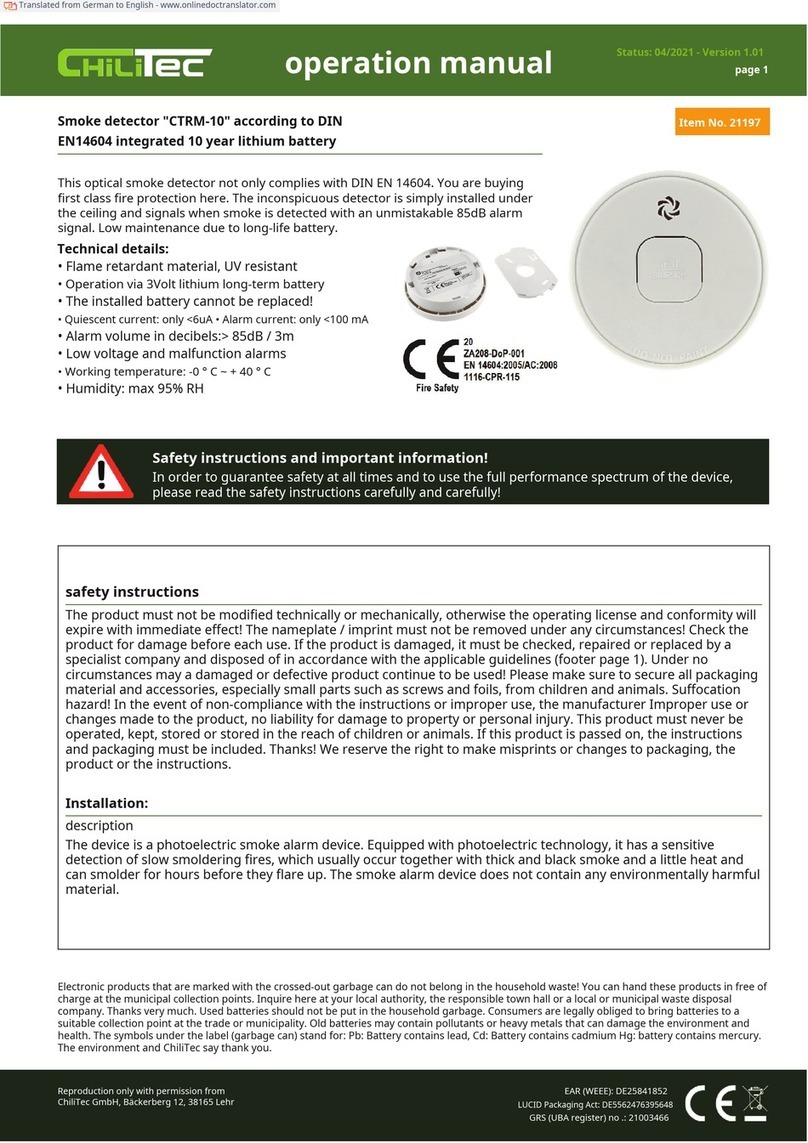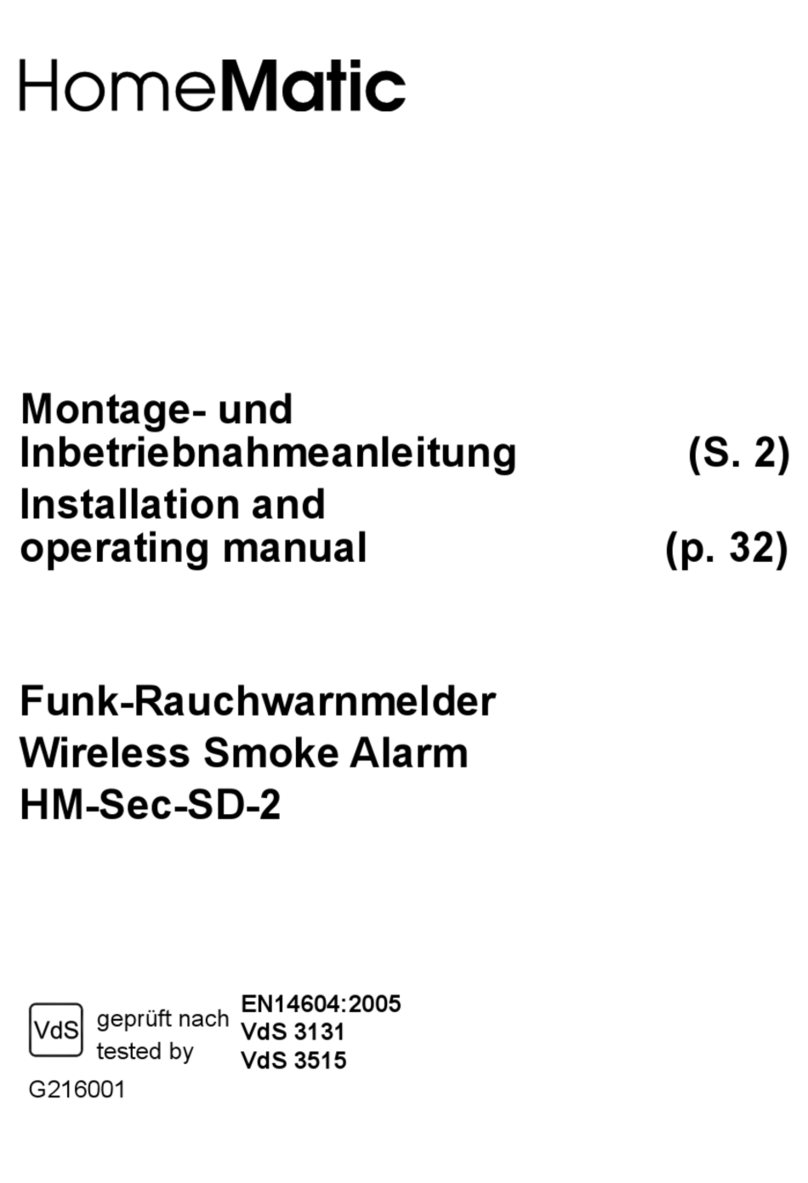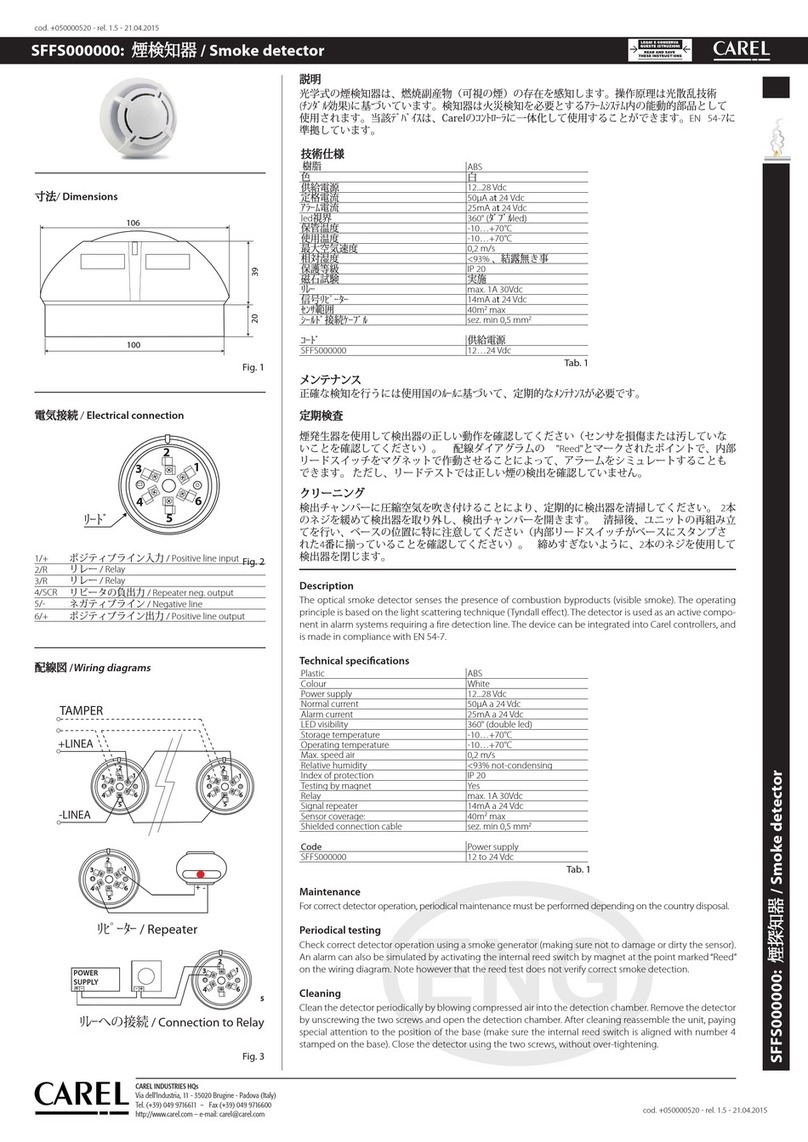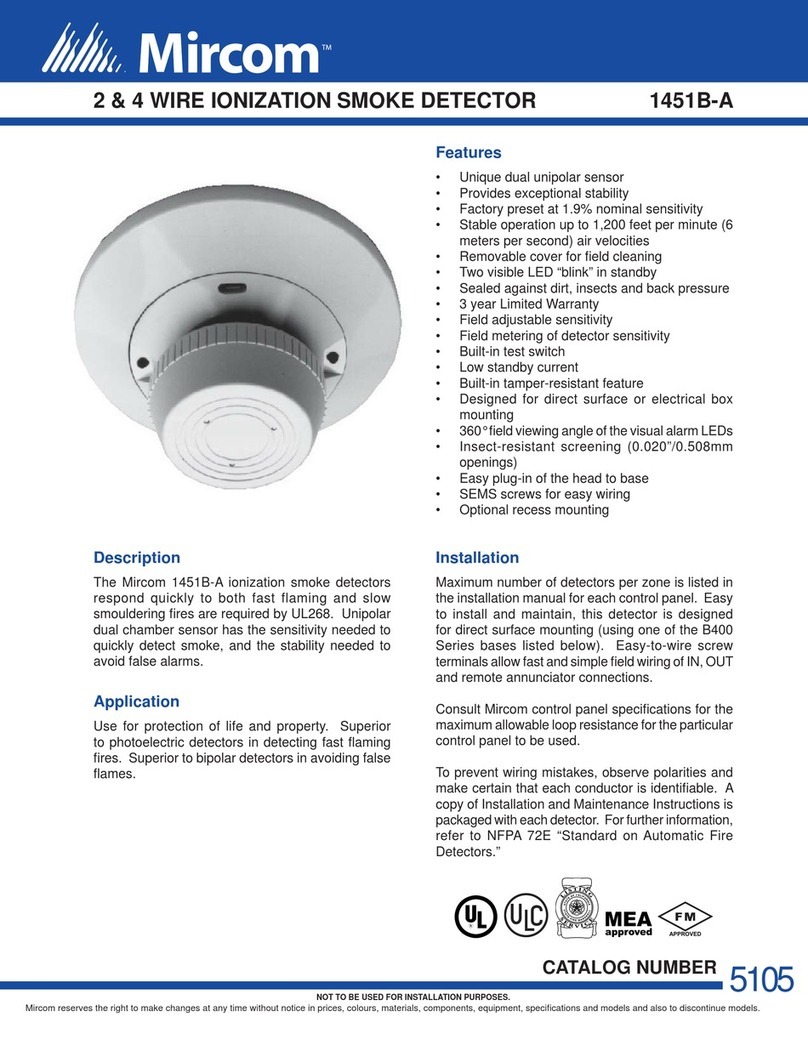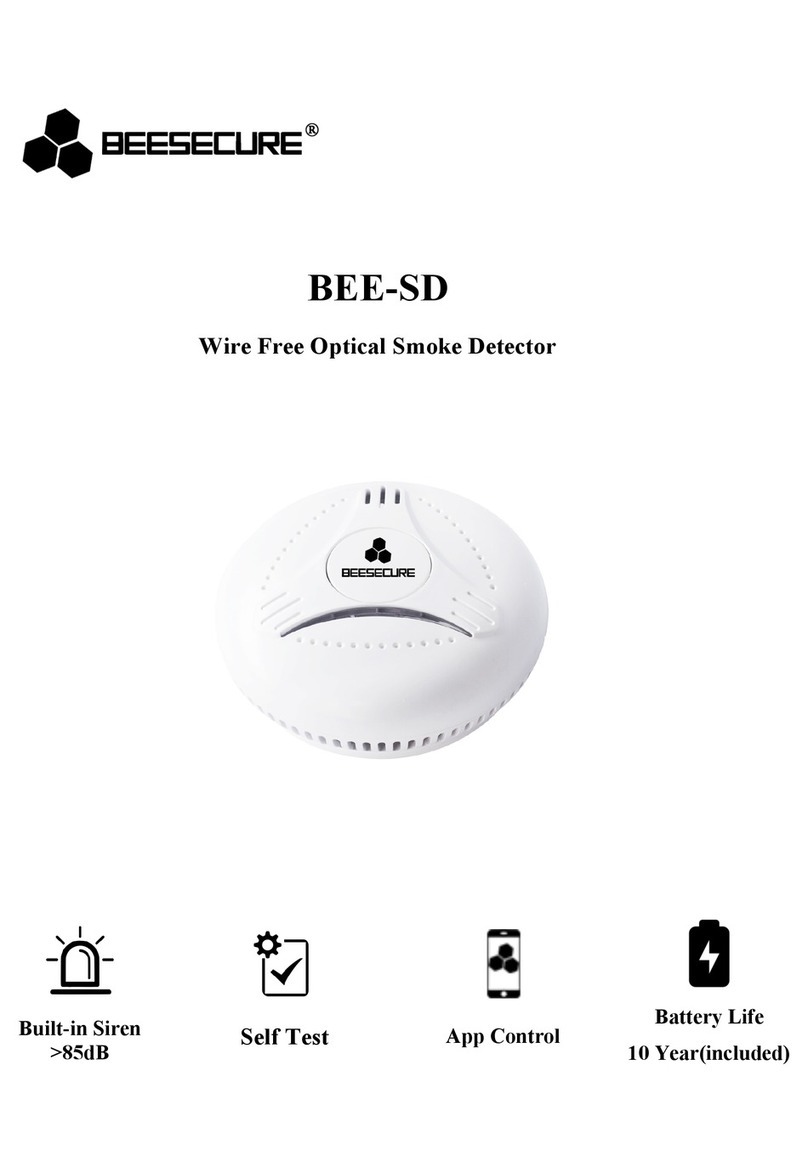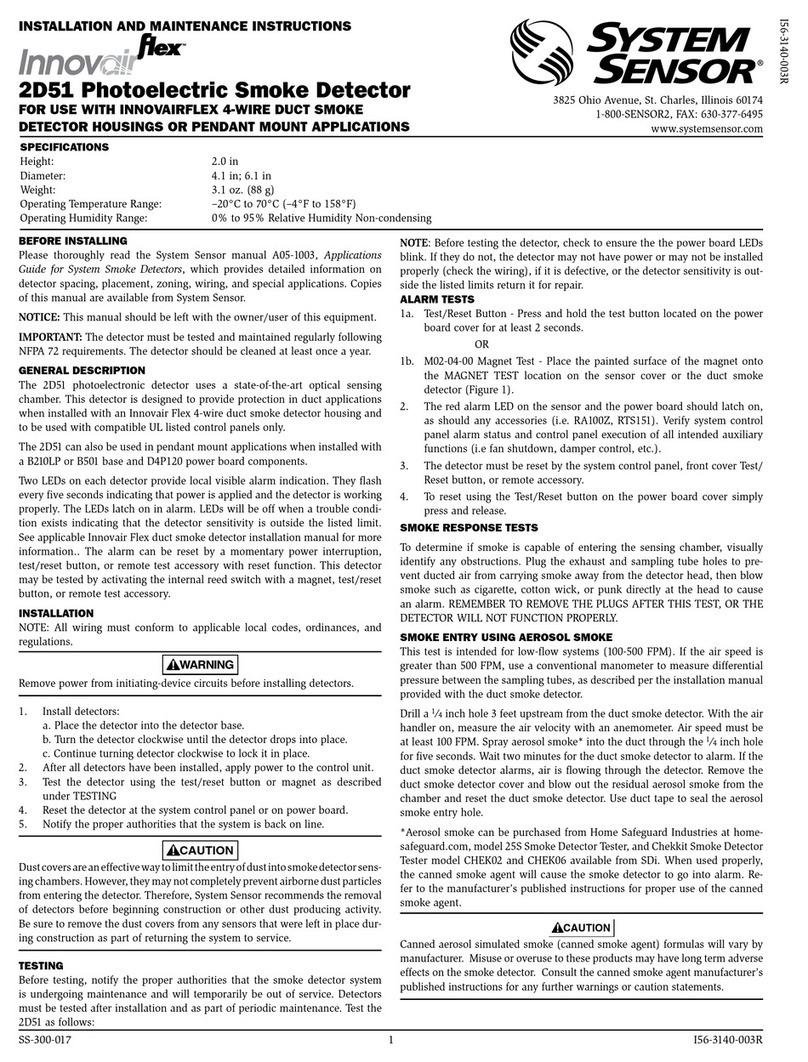Nittan Evolution-Advanced EV-DP User manual

DocumentNo. NISM/EV-DP/01
Date NOV 2003
EV-DP ANALOGUE ADDRESSABLE
DUAL WAVELENGTH
PHOTOELECTRIC SMOKE SENSOR
INSTRUCTION MANUAL
evolution-advanced
Quality System Certificate No. 041
Assessed to BS EN ISO 9001:2002
LPCB REF: 041f/02

DATE:
PAGE:
Ref No:
ISSUE:
of
16
evolution-advanced
EV-DP ANALOGUE ADDRESSABLE
DUAL WAVELENGTH PHOTOELECTRIC SMOKE
SENSOR
INSTRUCTION MANUAL
NOV 2003
NISM/EV-DP/01
01
NITTAN (UK) LTD - BRINGING STYLE INTO FIRE DETECTION SYSTEMS
The new EV-DP advanced analogue addressable smoke sensor forms part
of a brand new range of analogue addressable fire sensors from Nittan (UK)
Ltd called evolution-advanced.
The EV-DP together with the EV-PH, EV-H, EV-P and EV-UV are all elegantly
designed, low profile fire sensors which are aesthetically pleasing, thus
enabling them to blend unobtrusively into modern working environments.
The evolution analogue addressable range all feature the very latest
technological advancements such as ASIC design, increasing reliability and
performance.
evolution-advanced...........
evolution.....

DATE:
PAGE:
Ref No:
ISSUE:
of
26
evolution-advanced
EV-DP ANALOGUE ADDRESSABLE
DUAL WAVELENGTH PHOTOELECTRIC SMOKE
SENSOR
INSTRUCTION MANUAL
NOV 2003
NISM/EV-DP/01
01
Section 1 - INTRODUCTION
TheEV-DPisanattractively-styled,lowprofile
photoelectric smoke sensor for use with Nittan
'evolution' protocol control panels.
The EV-DP has a chemically etched, stainless steel
insect screen therefore reducing the ingress of insects
and airborne contaminants.
EV-DPfeatures:
*Optical detector,using dualwavelength LEDsand
supportinga uniformresponsein anyEN-54Test Fire
*Resistancetofalsealarmscausedbysteam
*Softaddressing
*Lowprofile,stylishappearance
*Suppliedwith protectivedustcover,
(removeduringcommissioning)
* Low monitoring current
* Patented OMNIVIEWTM 360oLED fire alarm indicator
*Remoteindicatoroutput
*'BaseControl'auxilaryouput
*Non-polarisedterminals
*CompatiblewithSTB-4-EVandSTB-4SE-EVbases
Section 2 - SENSOR MODELS
TheEV-DPdualwavelenth photoelectricsmokesensor
hastwoterminalsforconnectiononto the two wire loop.
Theremainingterminalsprovideaswitchedcurrentsink
functionwhichoperateswhenthedetectorgoesinto
alarmcondition, suitable forthe operation ofan auxiliary
function such as a remote indicator. Terminal 3 (RIL) is
limited to 3mA. Terminal 2 (Base Control) is not current
limited.
Section 3 - BASE MODELS
A variety of bases are available for use with the EV-DP
sensors. It is important to use the correct base for each
application. The available base models are:
i)STB-4-EVbase:Forstandardusewith EV-DP series
photoelectricsensorwhenauxiliaryoutputnotused.
ii) STB-4SE-EV base: Similar to STB-4-EV base, except
deeper.
CONTENTS:-
Section1 - Introduction - Page 2
Section2 - SensorModels - Page 2
Section 3 - Base Models - Page 2
Section 4 - Installation - Page 3
Section 5 - Maintenance &
Cleaning - Page 3
Section 6 - Specifications - Page 4
Section 7 - Environment
Parameters:- - Page 4
- Temperature - Page 4
- Humidity - Page 4
Section 8 - EMC - Page 4
Section9 - AddressSettings - Page 5
Section 10 - Connections - Page 6
Section11 - Dimensions - Page 6

DATE:
PAGE:
Ref No:
ISSUE:
of
36
evolution-advanced
EV-DP ANALOGUE ADDRESSABLE
DUAL WAVELENGTH PHOTOELECTRIC SMOKE
SENSOR
INSTRUCTION MANUAL
NOV 2003
NISM/EV-DP/01
01
Section 4 - INSTALLATION
In normal use, the EV-DP sensor will be installed at
ceiling level. Pass the field wiring through the cable
hole in the centre and from the rear of the base. Offer
up and affix the base to the ceiling or conduit fitting with
screws via the base mounting holes. Connect the field
wiring to the base terminals, as detailed on page 6
making sure the wiring does not obstruct fitting of the
detector head. Fit the sensor head by inserting it into
the base and turning clockwise until the notch in the
detector rim aligns with base locking screw. The
OMNIVIEWTM 360o alarm indicator permits visibility from
anyangle.
Note:Theaddressmustbesetbeforethesensoris
fittedintoplace.
Fit the plastic dust cover supplied over the sensor to
keep out dust etc, until the system is commissioned. If
the dust cover is not fitted and the environment is
slightly dusty, such as when building work is being
completed, for example, problems of false alarms are
likely to occur after commissioning unless cleaning of
the sensor is undertaken. At commissioning, the dust
cover should be removed and discarded.
NOTE: THE PLASTIC DUST COVER MUST BE
REMOVED FROM THE SENSOR IN ORDER FOR
THE SENSOR TO FUNCTION CORRECTLY.
Section 5 - MAINTENANCE AND
CLEANING
Maintenance:
The EV-DP sensor is a high quality product engineered
for reliability. If proper preventative maintenance is not
carried out, there is a likelihood of malfunction, includ-
ing false alarms.
Servicing:
Servicing of the system should be carried out in accord-
ance with the requirements of BS 5839 Part 1, Fire
Detection and Alarm Systems for Buildings: Code of
Practice for System Design, Installation and Servicing.
The maintenance procedures described below should
be conducted with the following frequency:
One month after installation: Routine Inspection
and every 3 months
thereafter.
Every6months: OperationalTest.
Every 12 months: Functional Test and
Clean.
Allabovefrequenciesofmaintenanceare dependenton
ambient conditions.
RoutineInspection
i) Ensurethe sensor head is secureand undamaged.
ii) Check the smoke entry apertures are in no way
obstructed.
iii) Ensure the surface of the sensor’s outer cover is
clean. If there are deposits due to the presence of oil
vapour, dust etc, then the sensor should be cleaned in
accordancewiththe cleaninginstructionsdetailedlater
in this manual. It may be advisable to ensure that such
cleaningis conducted regularly inthefuture.
iv) Ensurenoequipmentwhichmaygeneratecombus-
tion products or fine airborne particles has been in-
stalled in the vicinity of the sensor since the last routine
inspection. If such equipment has been installed, then
you should notify the Fire Safety Officer or other
competent authority that its presence may cause false
alarms.
OperationalTest
The purpose of the Operational Test is to confirm the
sensor’s correct operation in response to a smoke
condition.
Note:When carryingoutsitetestingof Analogue
AddressableEvolutionsensors,theCIEshallbeset
totestmode priortobeginning thetests.
i) Take any necessary precautions at the control panel
to limit the sounding of the alarm sounders/bells and
anyfireservicesummoningdevice.
ii) Introduce a discrete amount of smoke into the sensor
head, e.g. using a 'No Climb - Solo' smoke test head.
Check that the sensor gives an alarm condition within 15
seconds. Check the LED indicator on the EV-DP
sensor illuminates and any remote indicator LED fitted
also illuminates.
iii) After the sensor has given the alarm condition, reset
the sensor from the control panel. It may be necessary
to allow a short time to elapse before resetting the
sensor, to allow any residual smoke from the test to
disperse.
iv) Before proceeding to the next sensor, ensure that the
sensorpreviouslytesteddoes not re-operateduetothe
presence of residual smoke.
FunctionalTests:-
The functional test checks the sensor operation. These
sensors may be returned to our factory for Functional
Testing.

DATE:
PAGE:
Ref No:
ISSUE:
of
46
evolution-advanced
EV-DP ANALOGUE ADDRESSABLE
DUAL WAVELENGTH PHOTOELECTRIC SMOKE
SENSOR
INSTRUCTION MANUAL
NOV 2003
NISM/EV-DP/01
01
Section 7 - ENVIRONMENTAL
PARAMETERS
TemperatureConsiderations:
Over the range from -10 oC. to +55 oC.
Humidity:
Relative Humidity of up to 95%, measured at 50 oC,
non-condensing.
Section 8 - EMC
Installation
The installation shall be in accordance with the
regulationseitheroftheapprovalbodyforanapproved
system, or otherwise, to the national code of practice/
regulations for the installation of the fire alarm system,
e.g. BS 5839 part 1.
Electromagnetic Compatibility (EMC)
On a site where there is an unusually high level of
potential electrical interference, e.g. where heavy
currents are being switched or where high levels of R.F.
are prevalent, care then must be taken in the type and
routing of cables. Particular care should be given to the
separation of zone wiring from the cable carrying the
interference.
Cleaning:
Note:ThesensorheadshouldNOTbe
disassembled.
i) Carefully remove the sensor head from its base.
ii) Use a soft, lint-free cloth, moistened with alcohol for
sticky deposits, to clean the plastic casing.
iii) Using a soft bristle brush (e.g. an artist's paint-
brush) carefully brush between the vanes in a linear
motion away from the smoke entry apertures.
iv) It is permissible to blow dust from the chamber,
without removing the cover, using a clean air line.
v) If the unit needs further cleaning, or is damaged or
corroded,pleasereturn the complete sensor toNittan
(UK) Ltd. for service.
Section 6 - SPECIFICATIONS
ModelReference: - EV-DP
Computer Reference: - F14N82105
Sensor Type: Dual wavelength
photoelectric smoke
sensor
Sensitivity: - Uniformresponseinall
EN-54 Fire Tests
OperatingCurrent: - 200
µ
amps
fire alarm (LED on)
5.2mA
Standard: - EN54Part7:2000
Mass: - 118g(excludingbase)
Charging Time: - 20 seconds
Ambient Temperature
Range: - -10 oC to +55 oC.
IPRating: -41

DATE:
PAGE:
Ref No:
ISSUE:
of
56
evolution-advanced
EV-DP ANALOGUE ADDRESSABLE
DUAL WAVELENGTH PHOTOELECTRIC SMOKE
SENSOR
INSTRUCTION MANUAL
NOV 2003
NISM/EV-DP/01
01
Section 9 - ADDRESS SETTING
• Insert sensor to be programmed into the base.
• Press any key on the keypad to bring the programmer out of ‘Sleep’ mode, then enter the password
(default is 1111), then press ‘OK’.
• Themenunowshows‘Enter’(selected)and'New.Pwd.'UsetheRightArrowbutton(6)tochangethe
selectedoperationthenpress‘OK’.
• If'New.Pwd'isselectedthenentryofanewpassword,followedbyconfirmationofthenewpasswordwillbe
prompted.
• If the current password is not to be changed, press ‘OK’ with ‘Enter’ selected. The address programmer
will then scan for the attached sensor.
• If a sensor is fitted the programmer will report the sensor’s current address and its group, then prompt
for the next address to be programmed. The current address can be changed by simply entering a new 3
digit address, then pressing ‘OK’.
• Oncethesensoraddresshasbeenprogrammed,theprogrammerwillautomaticallyincrementthe
address to be programmed by one (1), and prompt for the next sensor to be fitted.
• If no detector is fitted, the programmer will report 'No Unit Found, Comm Error 1'. Fit a new sensor and
press ‘OK’.
• At any time there has been no key pressed for 30 seconds, or no programming operation is being carried
out, the backlight will switch OFF and the programmer will revert to its ‘Sleep’ mode in order to preserve
battery life.
• Theprogrammerhasanautomatic'LowBattery'warning,whichwillappearontheLCDwhentheunitpowers
up. When this appears there is still sufficient charge left in the batteries to program a significant number of
Evolutiondevices,howevertheprogrammer should berechargedassoonaspossible.
• When the power supply is attached, the programmer will start a Fast charge cycle which will last for
2 hours, then automatically switch to trickle charge. Overnight charging (12 hours) is sufficient to fully
re-charge the batteries. Fast charge and trickle charge status is indicated by two LEDs.

DATE:
PAGE:
Ref No:
ISSUE:
of
66
evolution-advanced
EV-DP ANALOGUE ADDRESSABLE
DUAL WAVELENGTH PHOTOELECTRIC SMOKE
SENSOR
INSTRUCTION MANUAL
NOV 2003
NISM/EV-DP/01
01
Section 10 - CONNECTIONS
Section 11 - DIMENSIONS
15mm
33mm
∅104mm
STB-4-EVbase STB-4SE-EVbase
Auxiliary terminal RIL current limited to 3mA. Base control is not current limited as the auxiliary equipment provides
the limiting. If the +ve supply for the auxiliary equipment is taken from the EV loop, care must be taken to not
cause corruption of the EV protocol by excessive current draw.
RILmustbeLEDtype Max.currentthrough
3=3mA@24V d.c.
_1
23
61
23
6
RIL
+
+
Base
Control
Table of contents
Other Nittan Smoke Alarm manuals
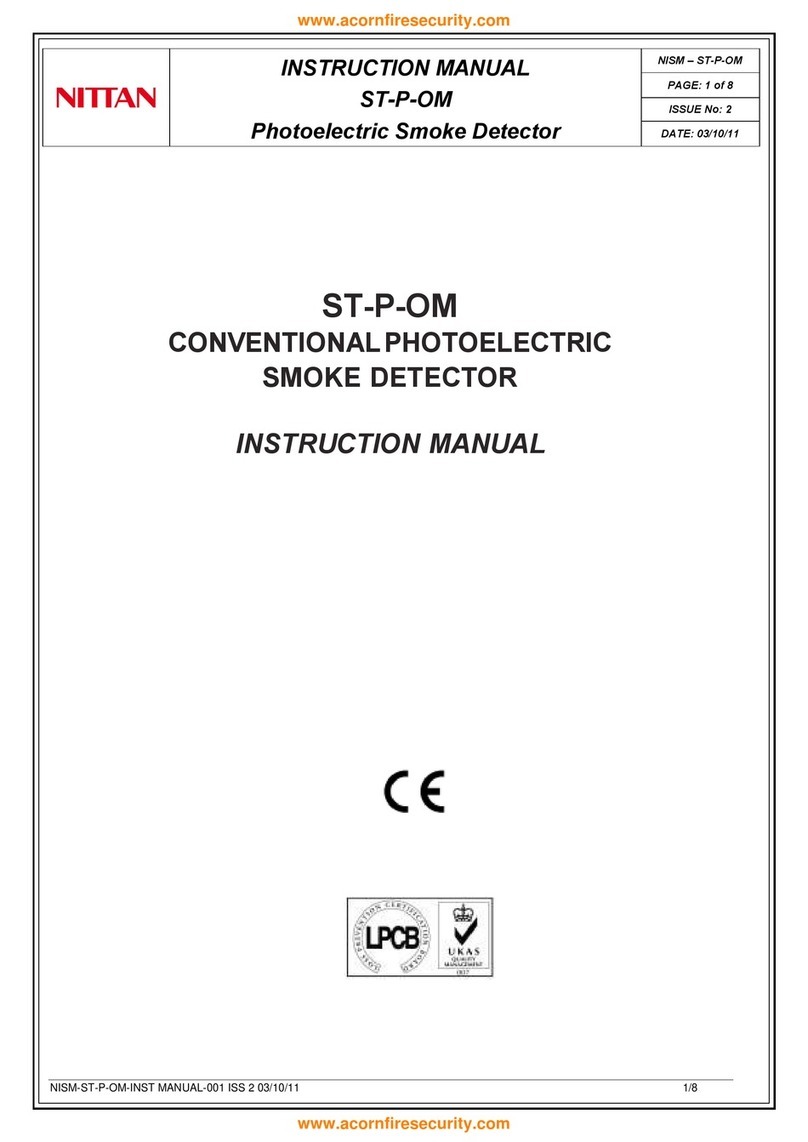
Nittan
Nittan ST-P-OM User manual
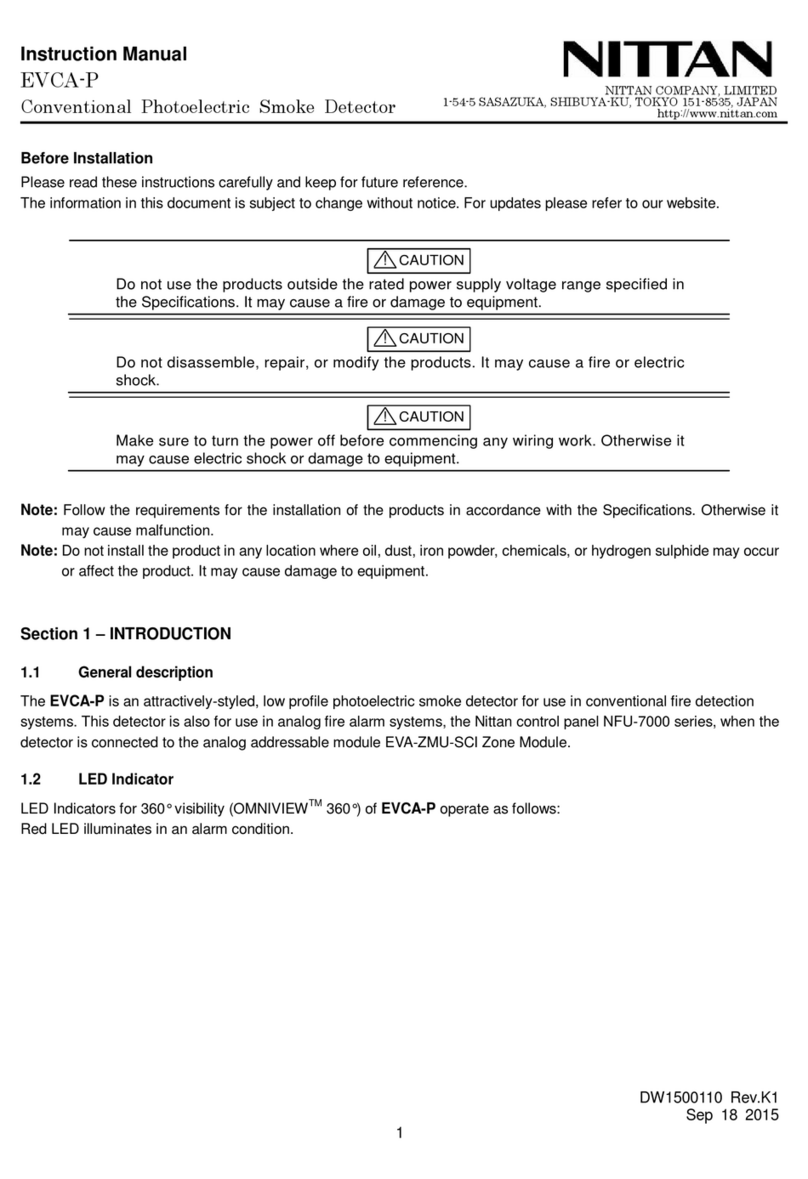
Nittan
Nittan EVCA-P User manual
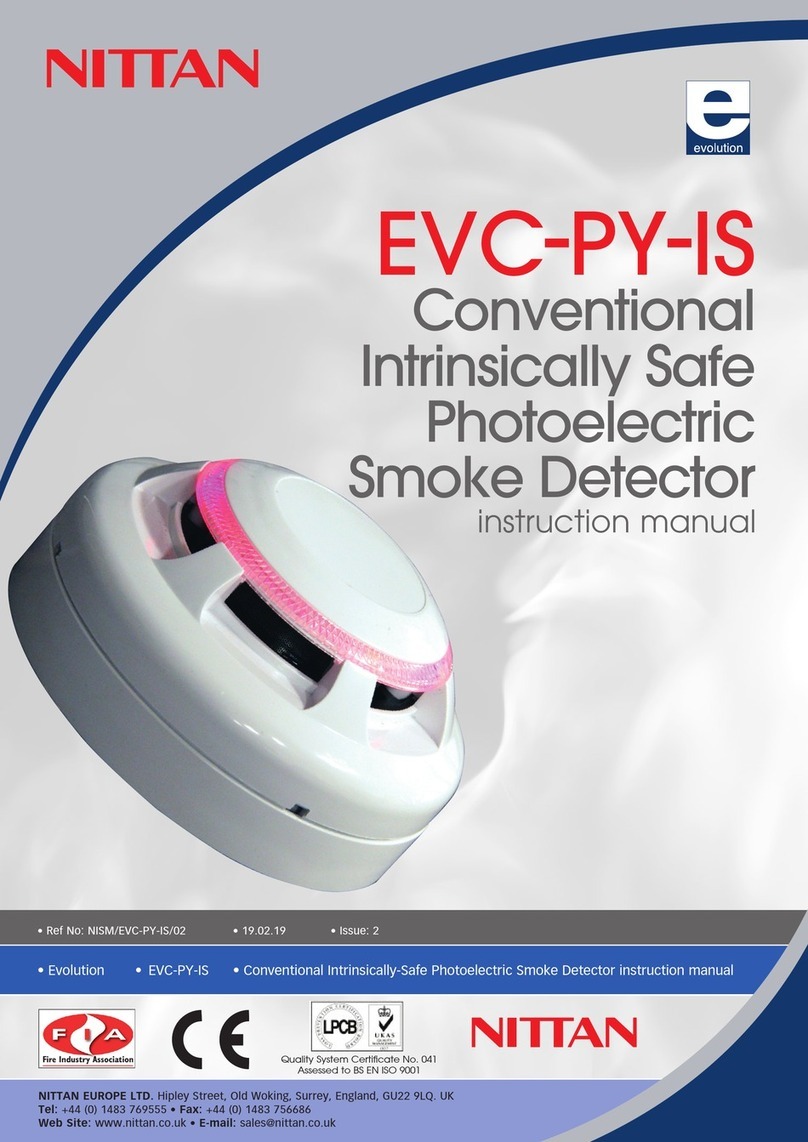
Nittan
Nittan EVC-PY-IS User manual
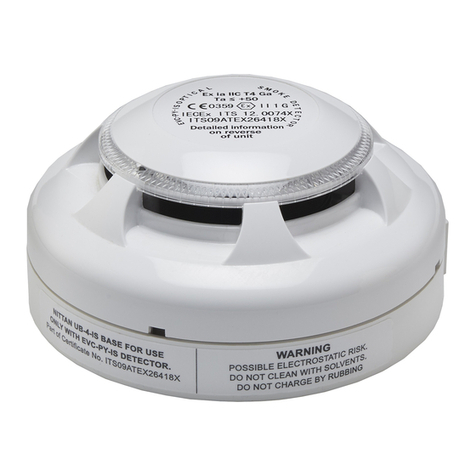
Nittan
Nittan evolution EVC-P User manual
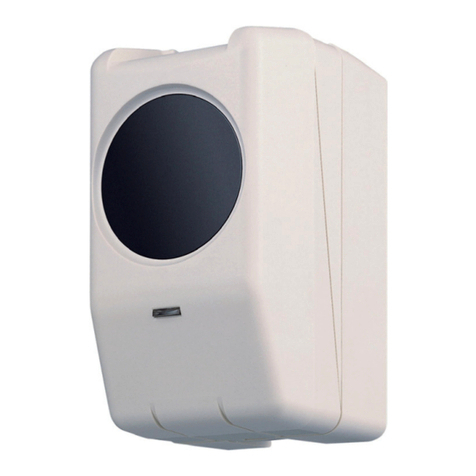
Nittan
Nittan CKLD-KPT2 User manual
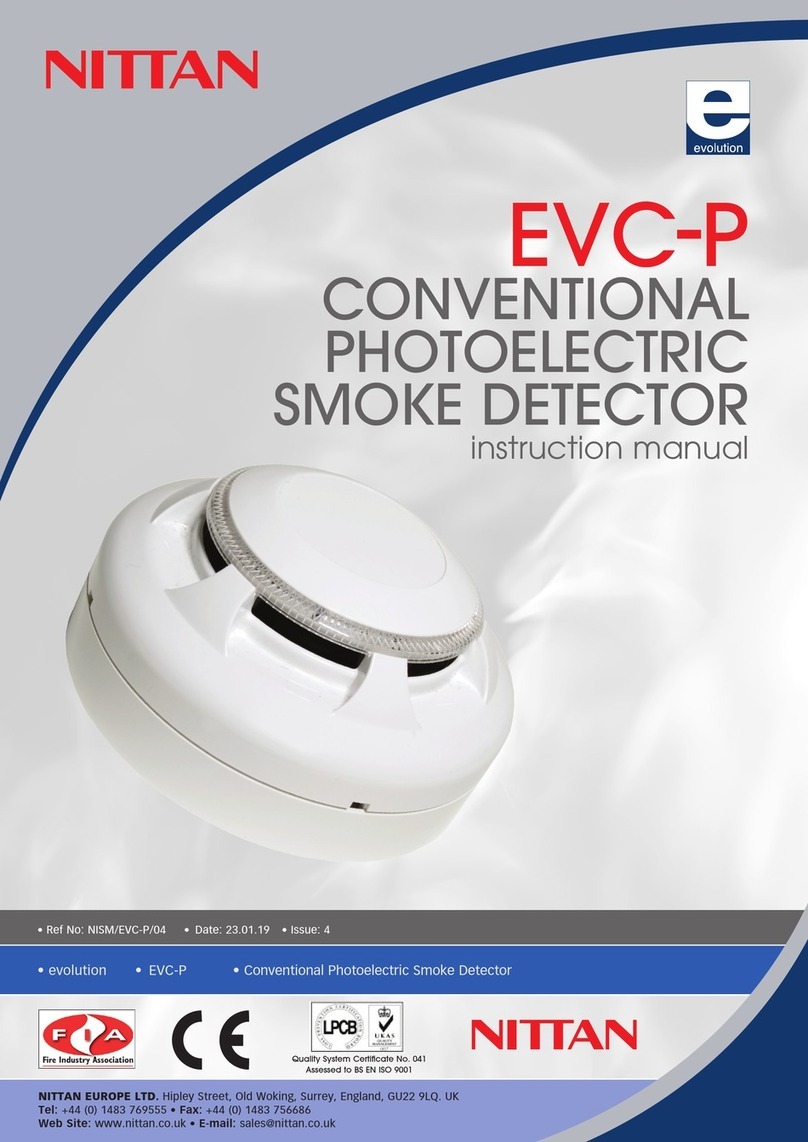
Nittan
Nittan EVC-P User manual
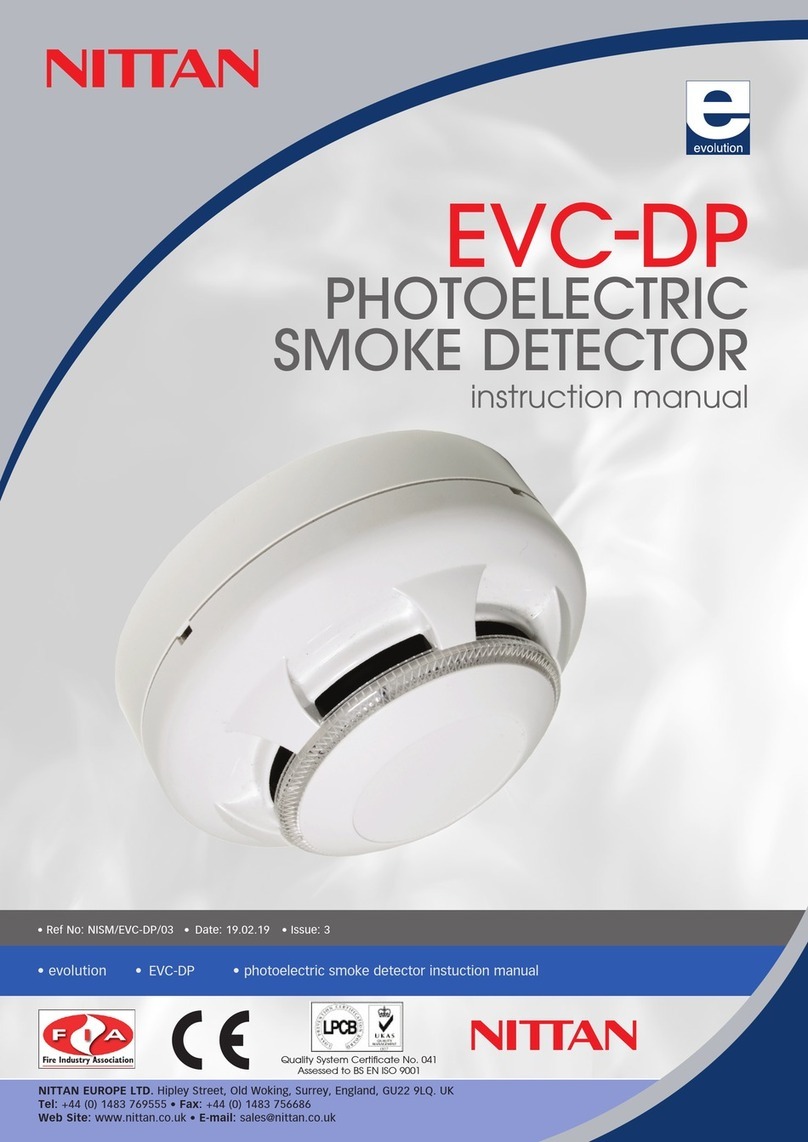
Nittan
Nittan Evolution EVC-DP User manual
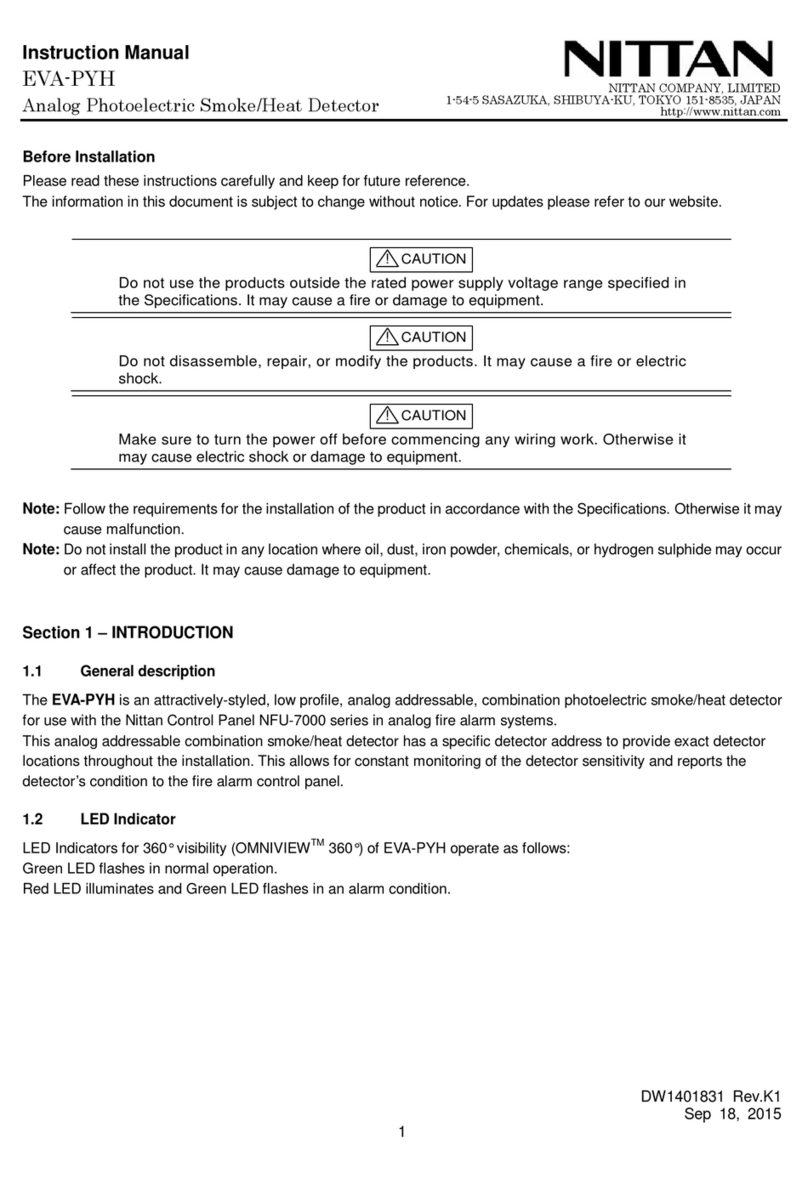
Nittan
Nittan EVA-PYH User manual
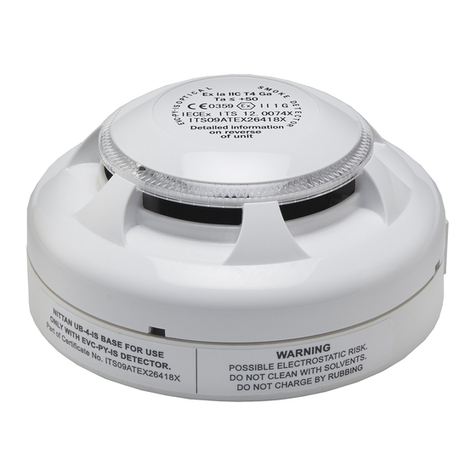
Nittan
Nittan EVA-PYH User manual

Nittan
Nittan ST-P-AS User manual
Popular Smoke Alarm manuals by other brands
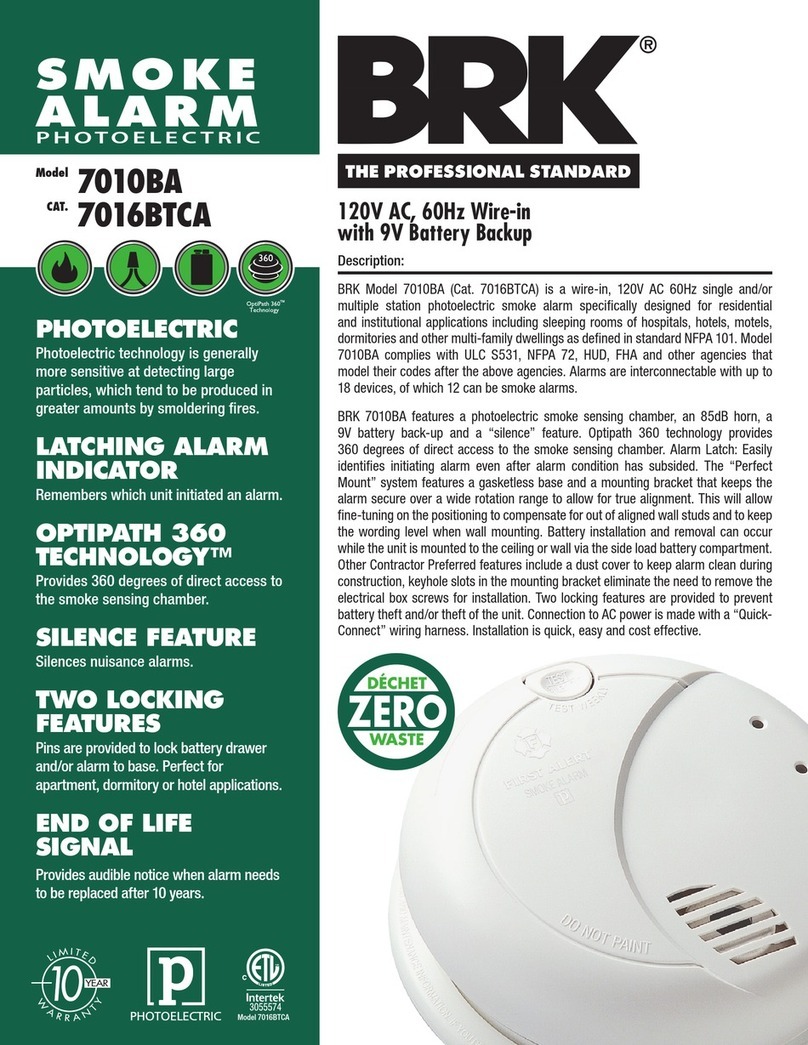
BRK electronic
BRK electronic 7010BA Specification sheet
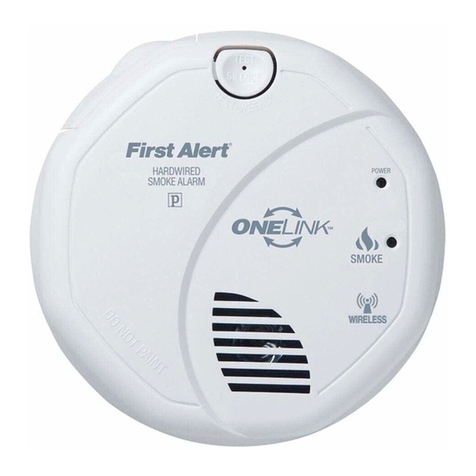
First Alert
First Alert ONELINK user manual

Bosch
Bosch FAS-420-TP Series Quick installation guide
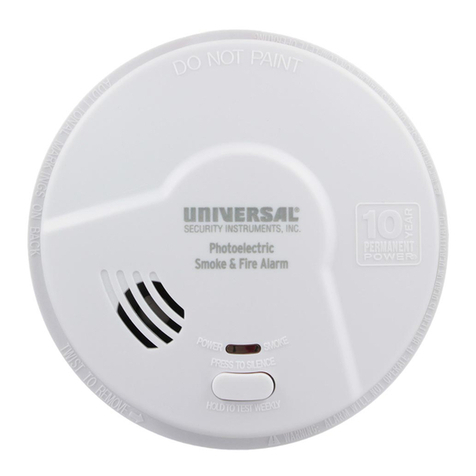
Universal Security Instruments
Universal Security Instruments MP316S instructions
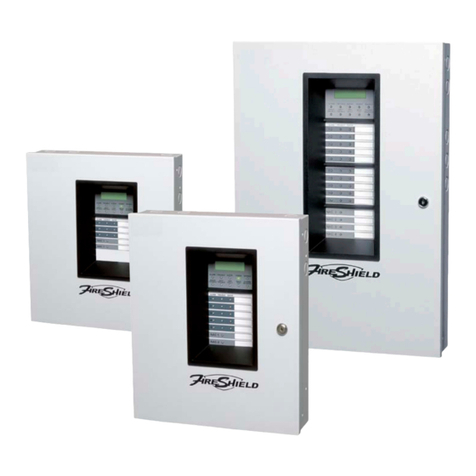
GE Security
GE Security FireShield FS302 Technical reference manual
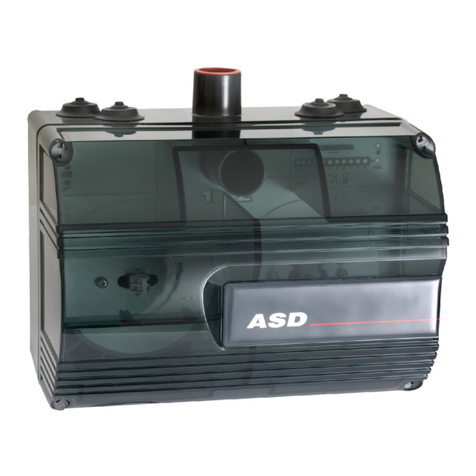
Xtralis
Xtralis ICAM IAS-2 Product guide


